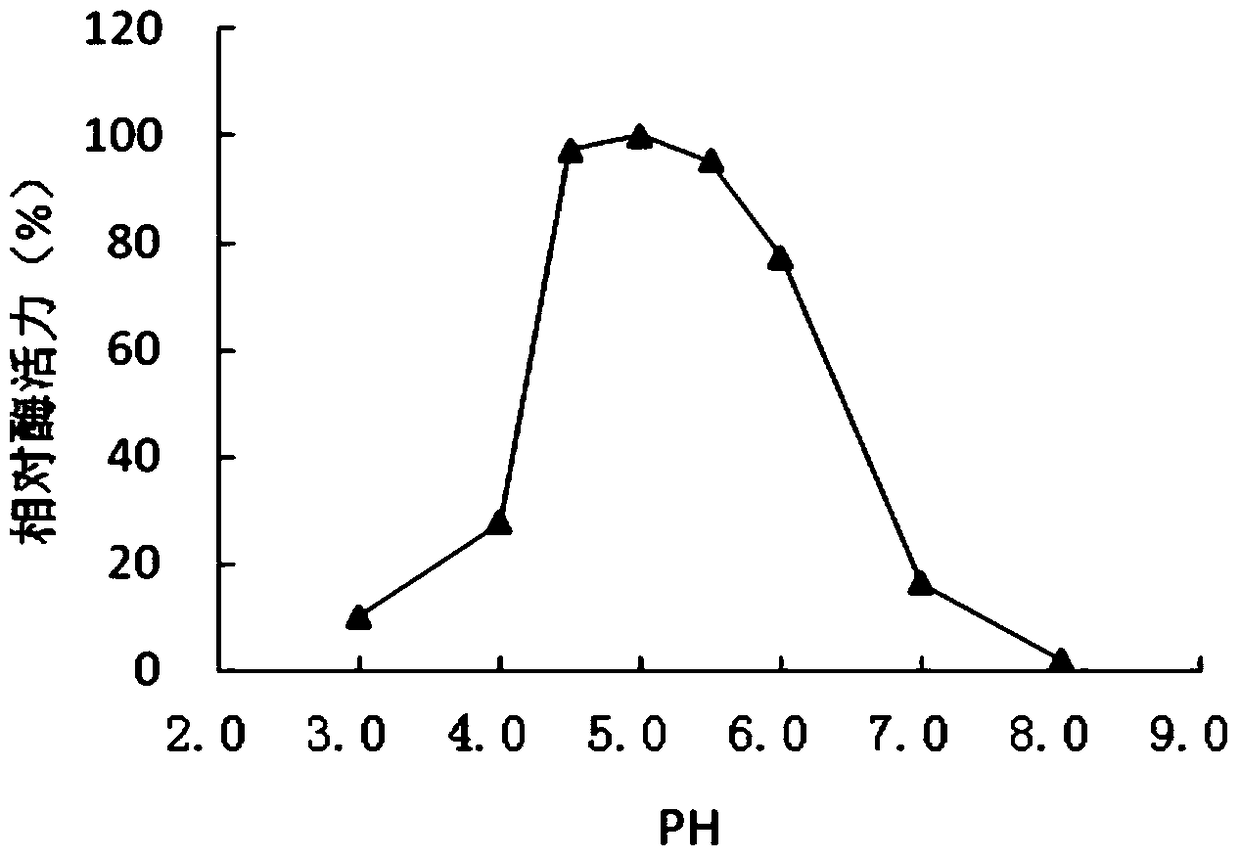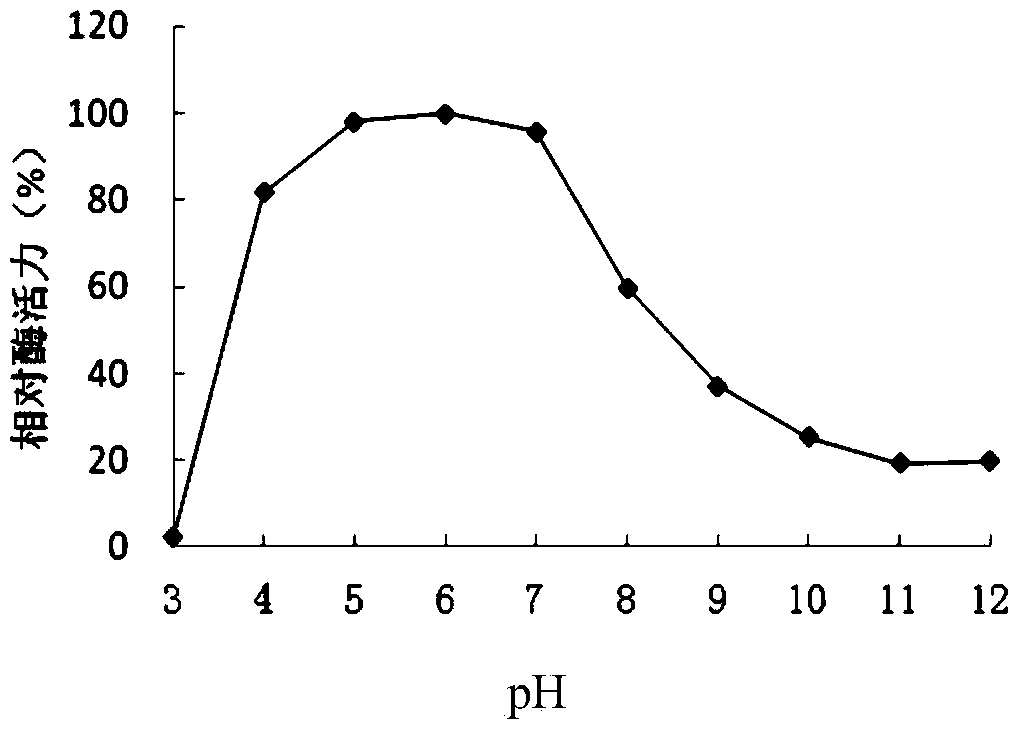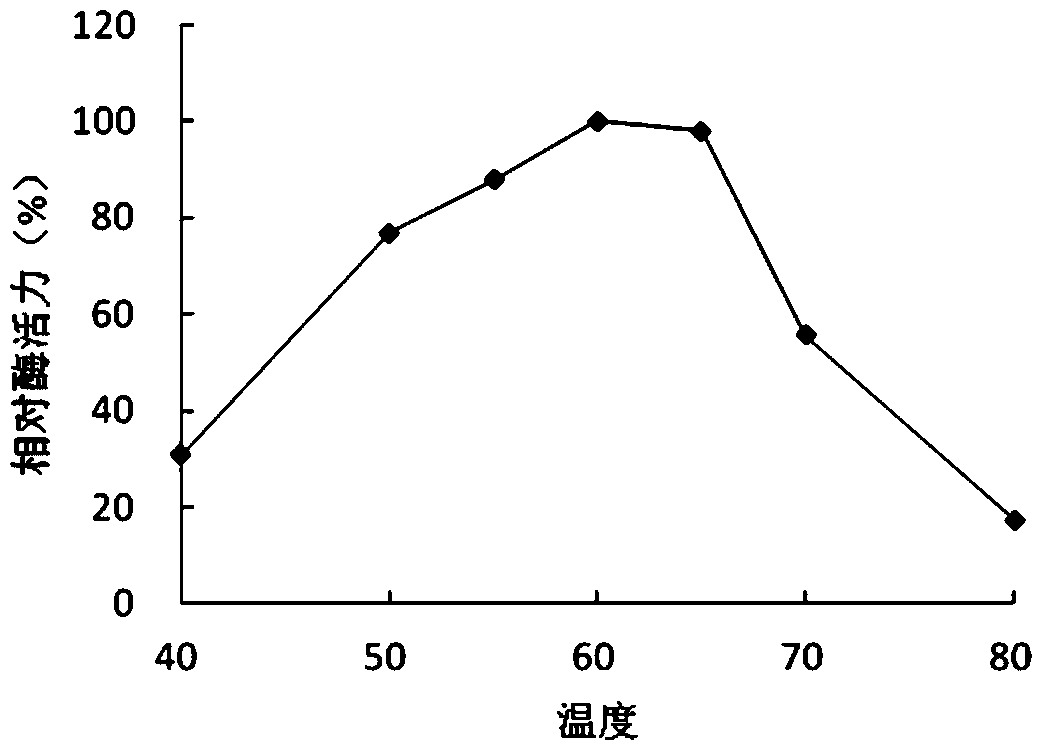A fungal-derived acid cellulase and its gene and application
A cellulase and gene technology, applied in the field of genetic engineering, can solve problems such as inappropriate pH range, low expression level, poor thermal stability, etc.
- Summary
- Abstract
- Description
- Claims
- Application Information
AI Technical Summary
Problems solved by technology
Method used
Image
Examples
Embodiment 1
[0053] Cloning of embodiment 1 cellulase coding gene cel5
[0054] Extraction of Prosthecium opalus Genomic DNA
[0055] The bacteria cultured in liquid for 3 days were centrifuged at 12,000rpm for 10min, and the collected mycelium was added to a high-temperature sterilized mortar, and quickly ground to powder with liquid nitrogen, and then the ground bacteria were transferred to a new, packed Put 15ml of CTAB lysate in a 50mL centrifuge tube, mix it up and down gently, place it in a 65°C water bath for 3 hours, and mix it upside down gently every 20 minutes to fully lyse the bacteria. Centrifuge at 12,000 rpm at 4°C for 10 min, pipette the supernatant into a new centrifuge tube, add an equal volume of chloroform for extraction, and place at room temperature for 5 min. Centrifuge at 12,000 rpm for 10 min at 4°C. Take the supernatant and add an equal volume of phenol / chloroform for extraction, and place it at room temperature for 5 minutes. Centrifuge at 12,000 rpm for 10 mi...
Embodiment 2
[0060] The acquisition of embodiment 2 cellulase cDNA
[0061] Extraction of total RNA from Prosthecium opalus using Oligo(dT) 20 and reverse transcriptase to obtain a strand of cDNA, then design primers F and R (see Table 1) for amplifying the open reading frame, amplify the single-stranded cDNA, obtain the cDNA sequence of cellulase, and amplify to obtain product recovery Sent to Ruibo Biotechnology Co., Ltd. for sequencing.
[0062] After comparing the genome sequence and cDNA sequence of cellulase, it was found that the gene contained an intron, the cDNA was 993 bp long, encoded 330 amino acids and a stop codon, and the N-terminal 19 amino acids were its signal peptide sequence. The comparison proves that the cellulase-encoding gene isolated and cloned from Prosthecium opalus is a new gene.
Embodiment 3
[0063] The construction of embodiment 3 cellulase engineering strains
[0064] (1) Construction of expression vector and expression in yeast
[0065] Using the cDNA of the correctly sequenced cellulase Cel5 as a template, primers F and R (see Table 1) with EcoR I and Not I restriction sites were designed and synthesized to amplify the coding region of the mature protein of Cel5. increase. And utilize EcoR I and Not I to cut PCR product, link into expression vector pPIC9 (Invitrogen, San Diego), the sequence of cellulase Cel5 mature protein is inserted into the downstream of the signal peptide sequence of above-mentioned expression vector, and signal peptide forms correct The reading frame was constructed into a yeast expression vector pPIC9-cel5, and transformed into Escherichia coli competent cell Trans1. The positive transformants were subjected to DNA sequencing, and the transformants with the correct sequence were used for large-scale preparation of recombinant plasmids....
PUM
| Property | Measurement | Unit |
|---|---|---|
| molecular weight | aaaaa | aaaaa |
Abstract
Description
Claims
Application Information
 Login to View More
Login to View More - R&D
- Intellectual Property
- Life Sciences
- Materials
- Tech Scout
- Unparalleled Data Quality
- Higher Quality Content
- 60% Fewer Hallucinations
Browse by: Latest US Patents, China's latest patents, Technical Efficacy Thesaurus, Application Domain, Technology Topic, Popular Technical Reports.
© 2025 PatSnap. All rights reserved.Legal|Privacy policy|Modern Slavery Act Transparency Statement|Sitemap|About US| Contact US: help@patsnap.com



